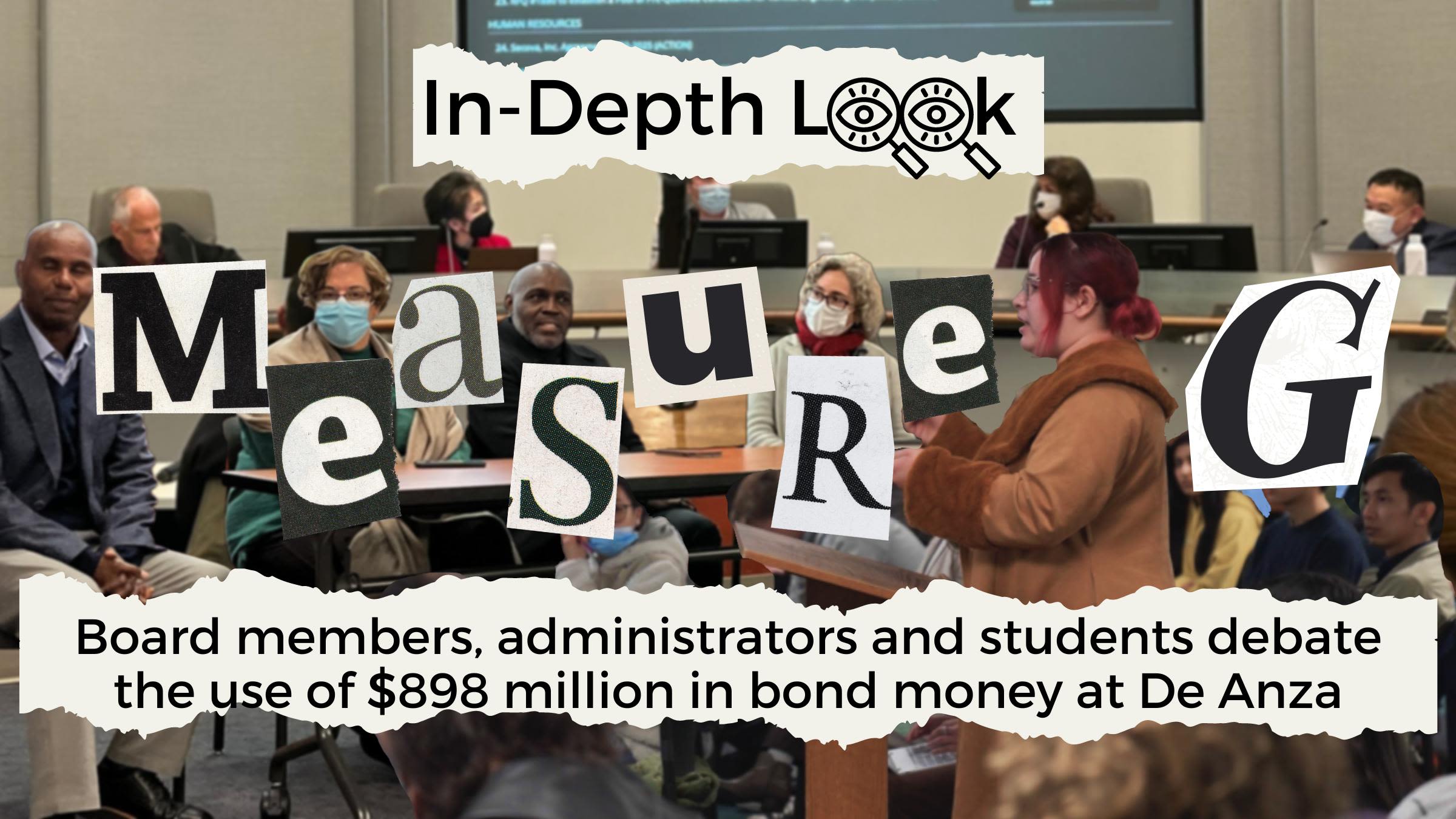
Introduction
In 2020, Foothill-De Anza district voters adopted Ballot Measure G, which authorized borrowing funds up to $898 million to upgrade, repair and build facilities, classrooms, labs, equipment and sites to deliver instructional services and support to students.
After almost half a decade of studying, planning and negotiating, the Board of Trustees and various shared governance groups involved in Measure G projects at De Anza College haven’t been able to come to a mutual agreement on how to move forward. The following article is part one of a series that will explore the past, present and future of projects related to the measure.

The Process of Passing Measure G
At the beginning of 2019, the FHDA Board of Trustees considered demolishing the Flint Center because they identified several structural issues with it.
Genevieve Kolar, a former De Anza student trustee from 2019-2020, said that there were two sides to the conversation around demolishing the structure. On one side, students and faculty supported the move because the Flint Center hadn’t been used for instructional purposes in many years.
“The De Anza Student (Government) actually rallied a lot of students and faculty who came to (the board meetings),” Kolar said. “(They) said, ‘We don't use the Flint Center and we need something that actually serves the campus.’”
On the other side of the conversation, she said Cupertino residents opposed the move.
“There were Cupertino residents who liked going to shows at the Flint Center, and had good memories related to it,” Kolar said. “That's good (because) being connected to the community is important. However, this same community really didn't care about the college – they just liked events at the Flint Center, which was already closed at the point (in time) we were talking about its demolition.”
In place of the Flint Center, students and faculty advocated for affordable housing to be built on campus. In response, the De Anza Student Government Senate passed a resolution officially endorsing the closure of the Flint Center and prioritizing affordable housing and multi-use community space in new construction projects.
Kolar said there was a survey that helped decide the future of the Flint Center. She said it wasn't circulated as widely among the De Anza community as it was broader communities outside the college who felt that they needed an event center to replace Flint.
“When you're deciding something for the community, it's really important that you know what groups you've heard from and who you haven't heard from,” Kolar said. “(I think) the results didn’t have a significant enough group of people to represent (the whole De Anza community) because it didn't ask any demographic questions about people who filled it out. Basically, what (the survey) ended up doing is it totally steered the conversation into, ‘This has to be an event center.’”
A month after the resolution, on June 10, 2019, the FHDA Board of Trustees decided to permanently close the Flint Center at De Anza College and began the process of replacing Flint with a new community space under a project called the Community Benefit Initiative.
A steering committee, made up of members of the FHDA chancellor’s office including Chancellor Judy Miner, Vice Chancellor of Business Services Susan Cheu and Coordinator of Communications and Public Affairs Paula Norsell as well as De Anza College administrators including Vice President Christina Espinosa-Pieb and Acting Vice President of College Operations Pam Grey, developed a plan and gathered ideas and questions related to the closure of the theater.
On January 13, 2020, Chancellor Judy Miner spoke about changing the name of the project from the “Community Benefit Initiative” to the “De Anza Event Center” to reflect college and community input received regarding the project. In a recent interview, Miner said she hoped a new event center could serve as the front door of the campus and be an architectural statement.
“I think there was so much interest in the community for replacing the Flint Center with an event center,” Miner said. “(The Flint center) was really an iconic building for the community.”
Tim Shively, the president of the Faculty Association, explained how the Foothill-De Anza District sought to find a middle ground between the students and faculty as well as the outside Cupertino community on the threshold of voting for the measure.
“The District campaigned for Measure G by attempting to pacify both groups, for in addition to the promise of a new Event Center, $200 million was earmarked for affordable housing (though not necessarily campus housing),” Shively wrote in a Feb. 26 newsletter. “Yet neither of these items was specified in the actual ballot proposition language for Measure G. This allowed the District considerable flexibility in determining the what, where, and when of Bond expenditures.”
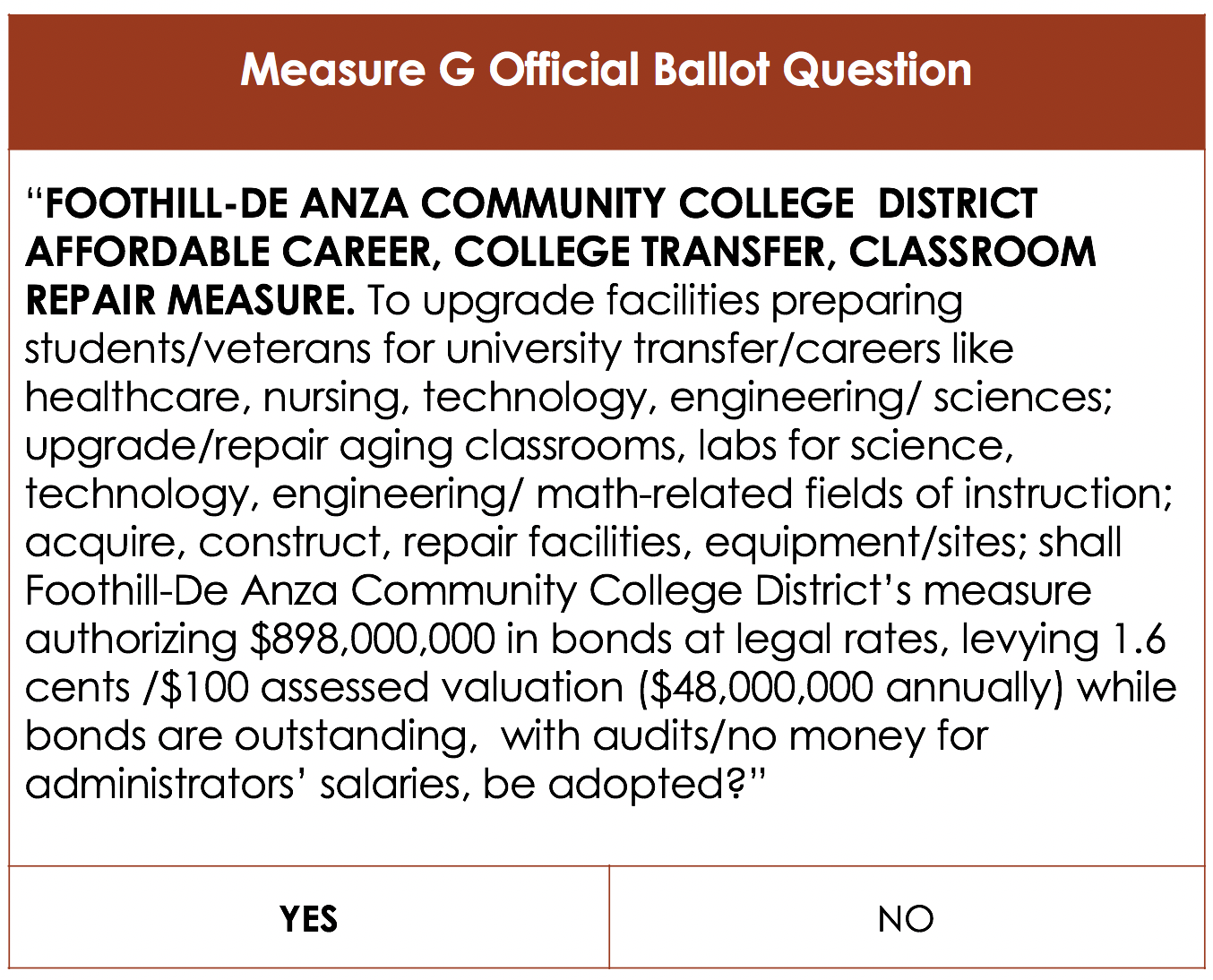
Measure G official ballot proposition.
Measure G official ballot proposition.
The official ballot proposition asked the public to vote “yes” or “no” on adopting general obligation measure (Measure G), with the money going toward the following purposes: “to upgrade facilities preparing students/veterans for university transfer and careers in fields such as healthcare, nursing, technology, engineering/sciences; to upgrade and repair aging classrooms as well as labs for science, technology, engineering/math-related fields of instruction; and to acquire, construct, repair facilities, equipment and sites.”
On March 3, 2020, voters in the Foothill-De Anza Community College District's service area approved an $898 million bond Measure G by a 58.88% margin.
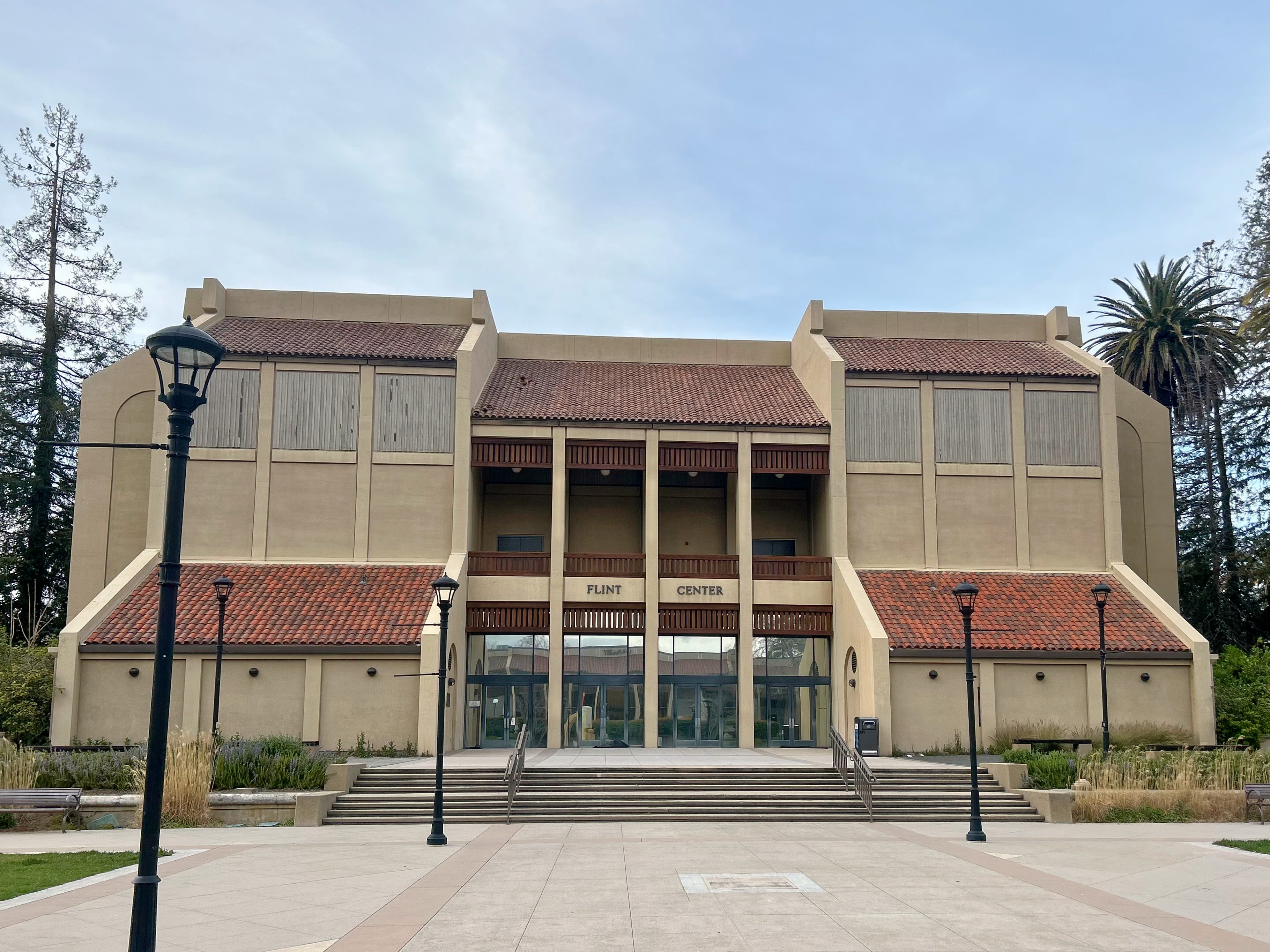


Breaking down the allocation of Measure G money
In a Board study session that took place on Nov. 2, 2020, $175 million was allocated toward De Anza projects and another $175 million was allocated toward Foothill projects. The remaining $548 million of the bond money was allocated toward projects under the jurisdiction of the Foothill-De Anza District.
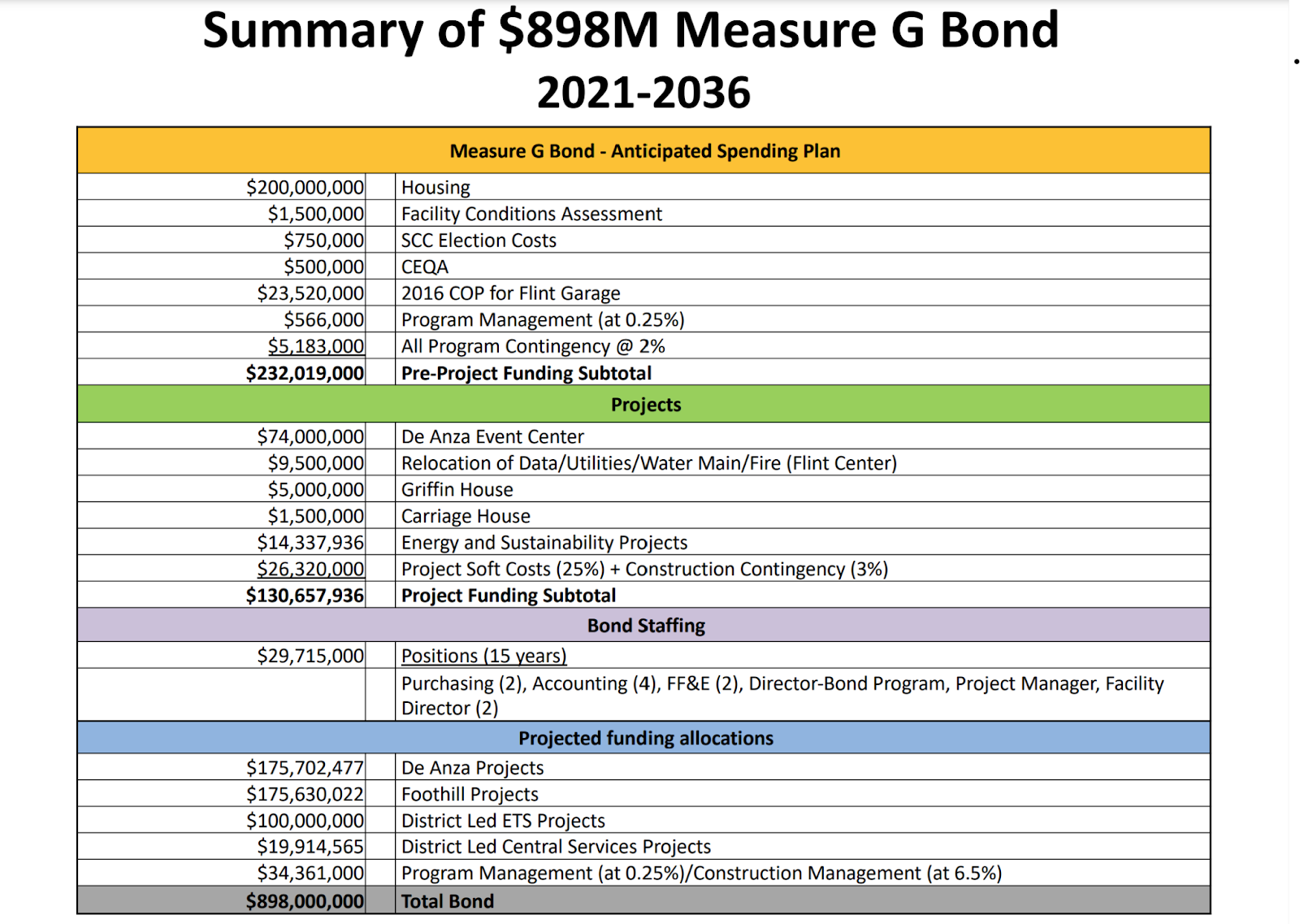
The summary of the $898 million Measure G bond's anticipated spending plan from 2021 to 2036.
The summary of the $898 million Measure G bond's anticipated spending plan from 2021 to 2036.
In the chart presented at the 2020 meeting (see image above), $74 million was allocated to the district project of building a new event center on the De Anza campus.
The District also put aside the $200 million for affordable housing as planned. However, during that same meeting, Susan Cheu, the vice chancellor of business services for the Foothill-De Anza district, said that building infrastructure to support affordable housing is not an allowed bond expense, so the district has decided to focus on partnering with outside companies to buy into existing developments.
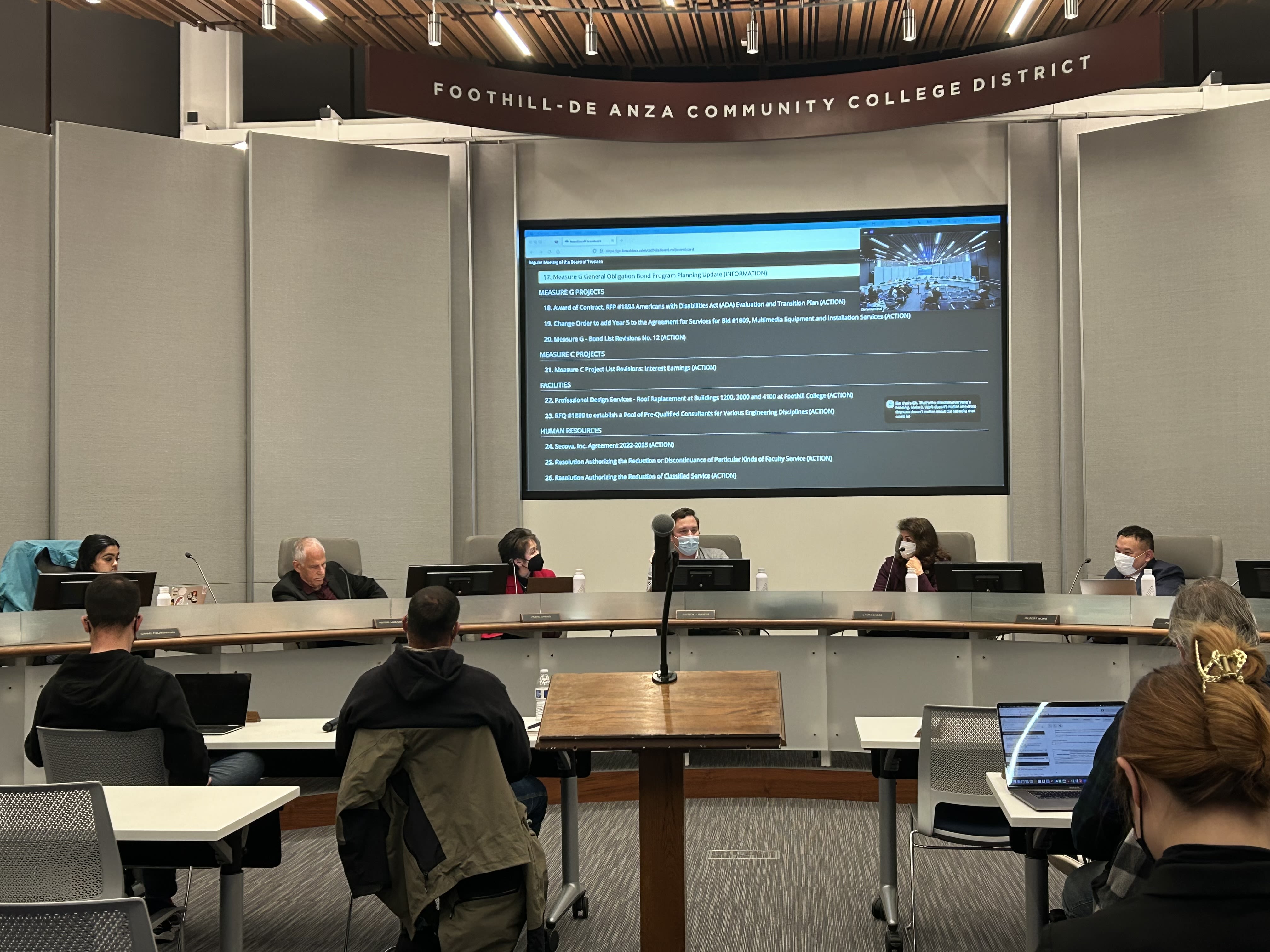
Proposed De Anza Projects: Arts Relocation and Student Services
After the bond passed, the De Anza administration proposed a Measure G-funded project: grouping student services together into a building to increase its accessibility.
However, the administration’s decision to potentially relocate the arts quad and build this facility in its place – thus displacing thousands of students and faculty without a plan to house them in a permanent location – has been a continued source of controversy. At this time, there is still no Measure G funding allocated toward building new facilities for the creative arts department.
Chia Wen, a photo laboratory technician, explained his feelings on the lack of funding.
“(When I hear that) there's no funding for the arts buildings,” Wen said, “I'm thinking, ‘We just got approved for almost $900 million and you (say that we) have no money for the Arts building?’”
Discussion regarding the art quad relocation dates back to the Facilities Master Plan 2016-2021 and the Facilities Master Plan 2021-2026. Daniel Smith, the Dean of Creative Arts, explained the differences between the two plans.
“Dating back to the 2016-2021 Facilities Master plan, there was already a plan to move the Creative Arts area and build a new art complex,” said Smith.
“What changed in the 2021 plan was where the art quad would be.”
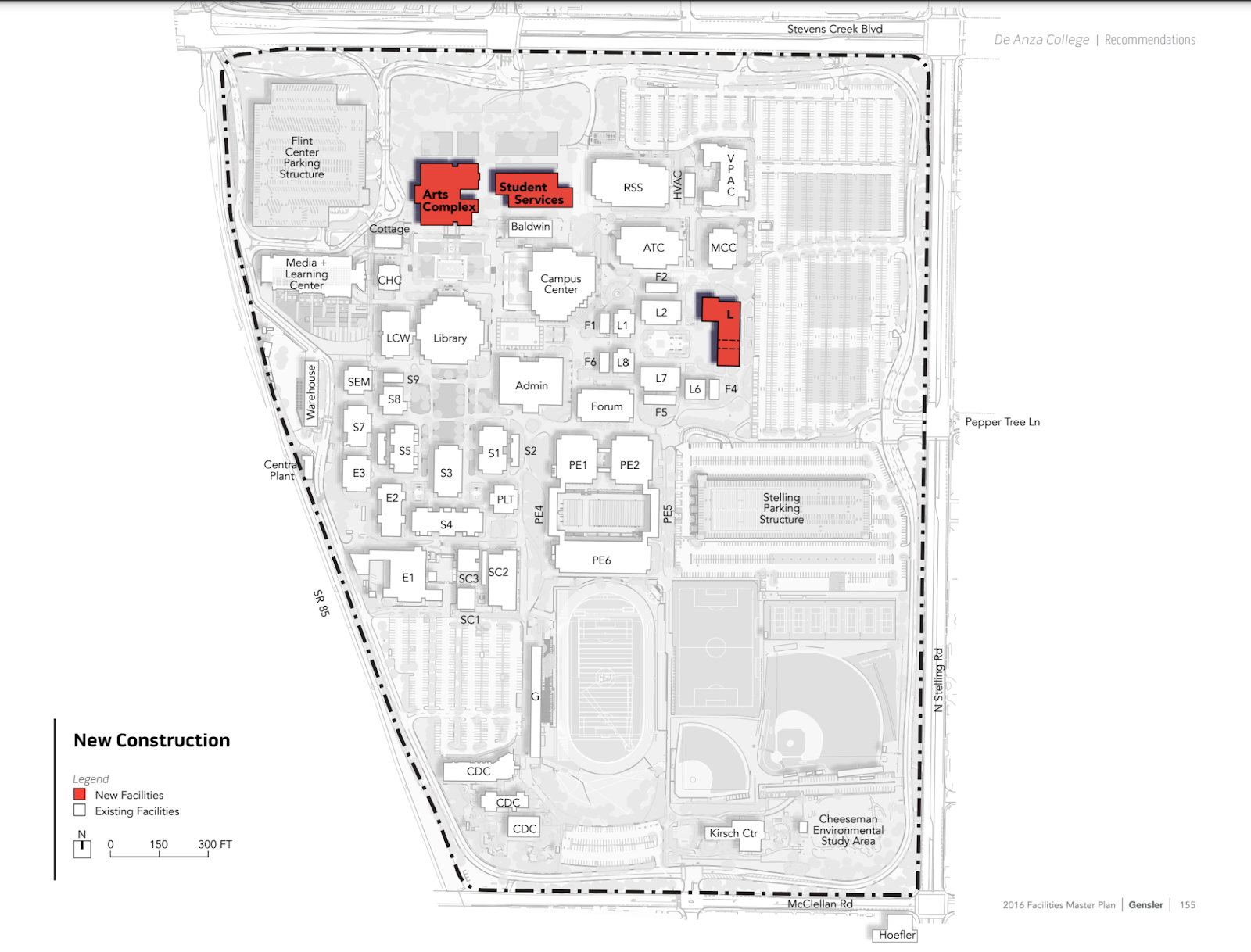
The Facilities Master Plan 2016-2021 shows an art complex is recommended to be built on the Flint center footprint.
The Facilities Master Plan 2016-2021 shows an art complex is recommended to be built on the Flint center footprint.
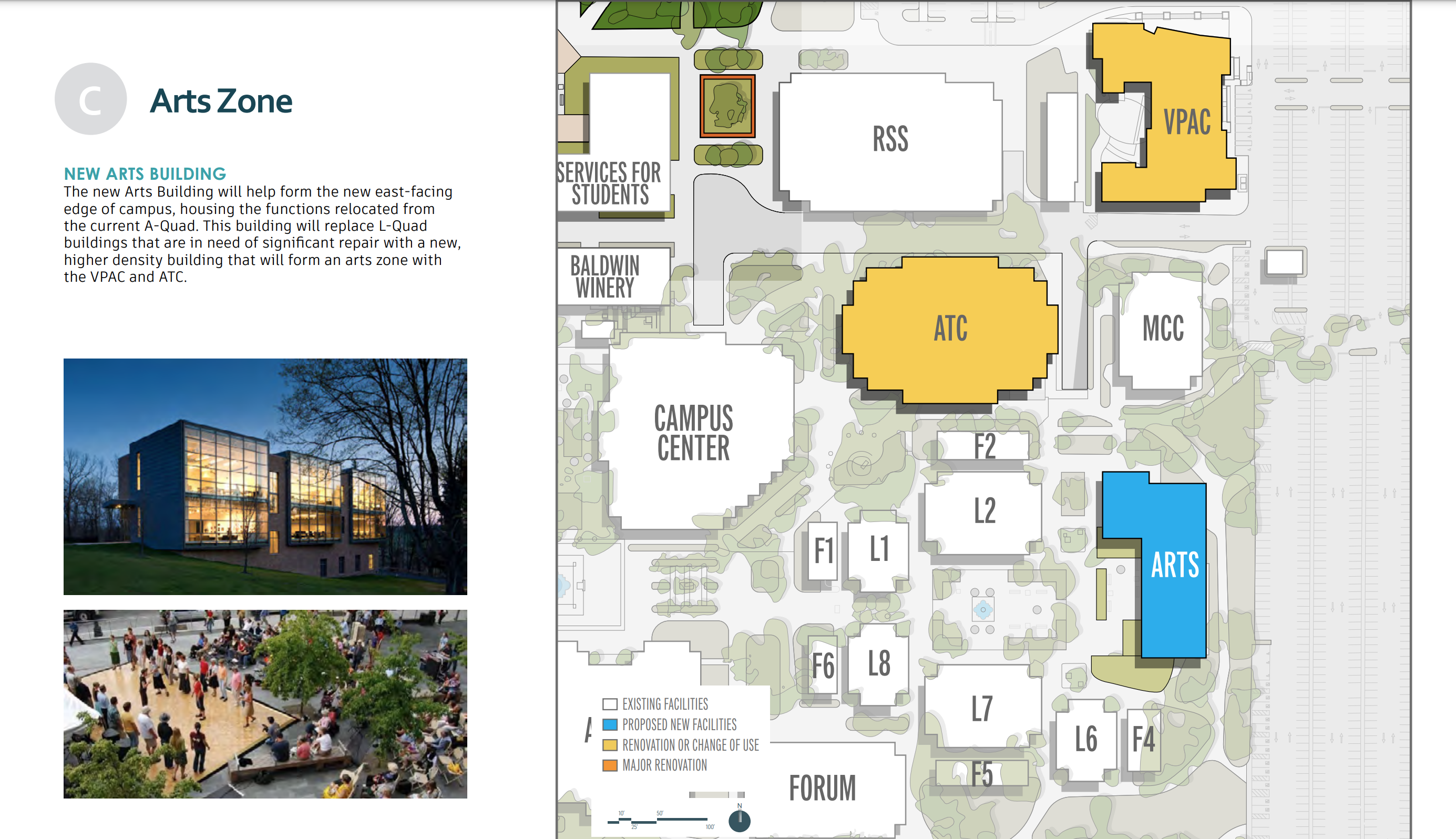
The Facilities Master Plan 2021-2026 shows an art zone is now recommended to be built on the L4 building footprint.
The Facilities Master Plan 2021-2026 shows an art zone is now recommended to be built on the L4 building footprint.
In February 2022, creative arts laboratory technicians recalled creating a written statement with their minimum requirements for a temporary swing space they would move into. Alyssa Vanzandt, a laboratory technician in the sculpture department, explained what she included.
“We compiled a list of basically all of our equipment power requirements and the square footage of our buildings in order to give an idea of what we would need only temporarily,” she said.
Site walks with the Creative Arts divisions were scheduled for April 8 and Oct. 14, 2022 by the De Anza administrators and the campus facilities team. Dean Daniel Smith and some laboratory technicians were invited to look at temporary locations for the arts quad but faculty members of this department were left out of communications regarding these plans.
Vanzandt said she was initially presented Options A and B (see below) by the facilities team and she rejected both of them because the spaces were incompatible with her program.
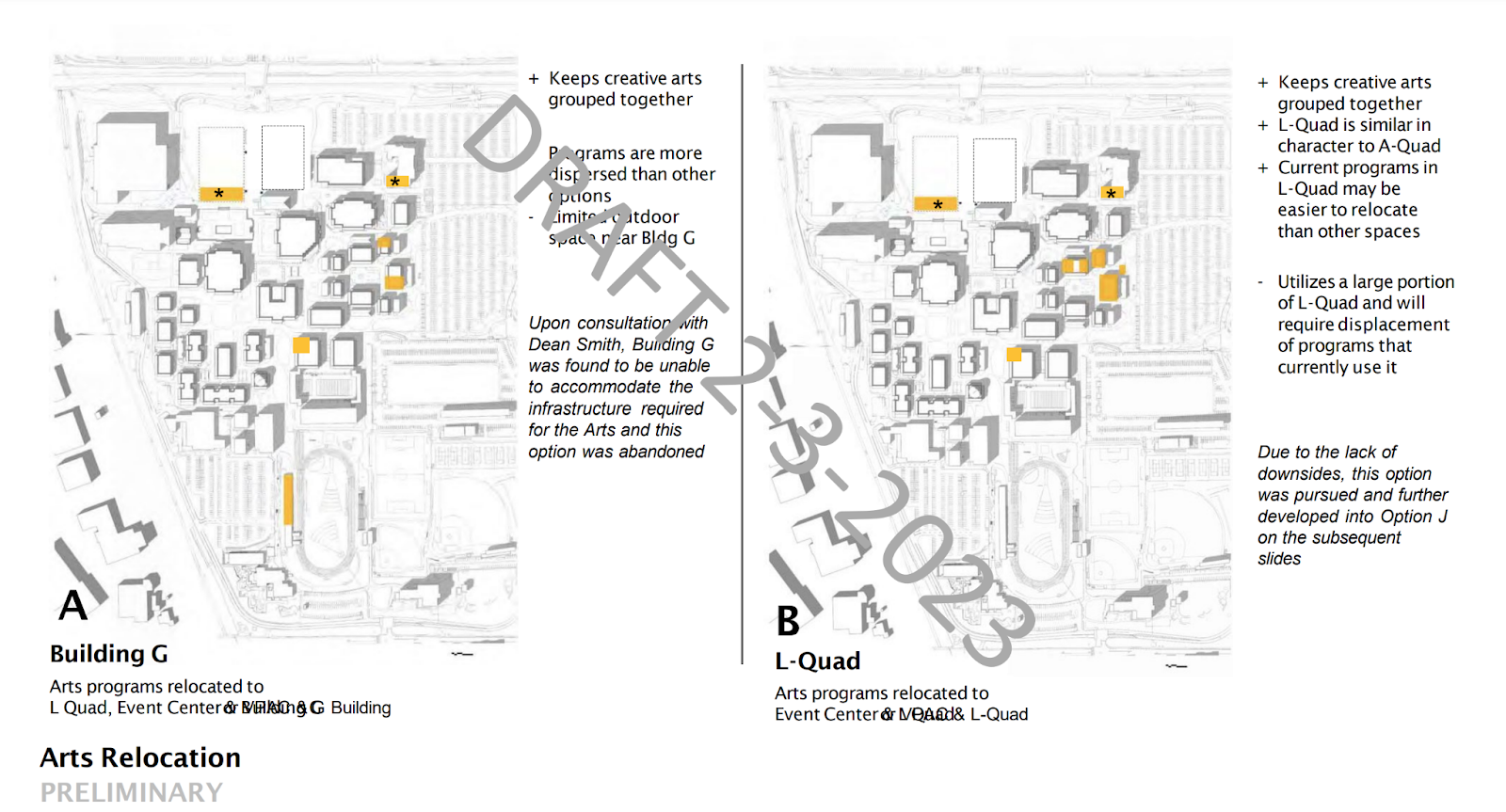
Option B suggested that the A-quad be relocated to L-quad because the two spaces were similar in character. Rocky Lewycky, a De Anza ceramics instructor, said that the space in Option B didn’t meet their requirements for a temporary space.
“(My technician and I thought that) temporary means maybe we're there for a year or two while they're building something, so what we supplied was an absolute minimum,” Lewycky said. “But when the proposed footprint (for the new A-quad location) comes out, it turns out that our proposed footprint is considerably less than even our temporary space requirement, so that would be cutting us by about 30% (of what we currently have).”
On Nov. 7, 2022, De Anza administrators presented their Measure G project progress to the FHDA Board of Trustees, formally acknowledging that funding for the new art building was not identified in Measure G bond. Instead, it would only fund the construction of the new services for students building on the current art quad location and a new Event Center to replace Flint.
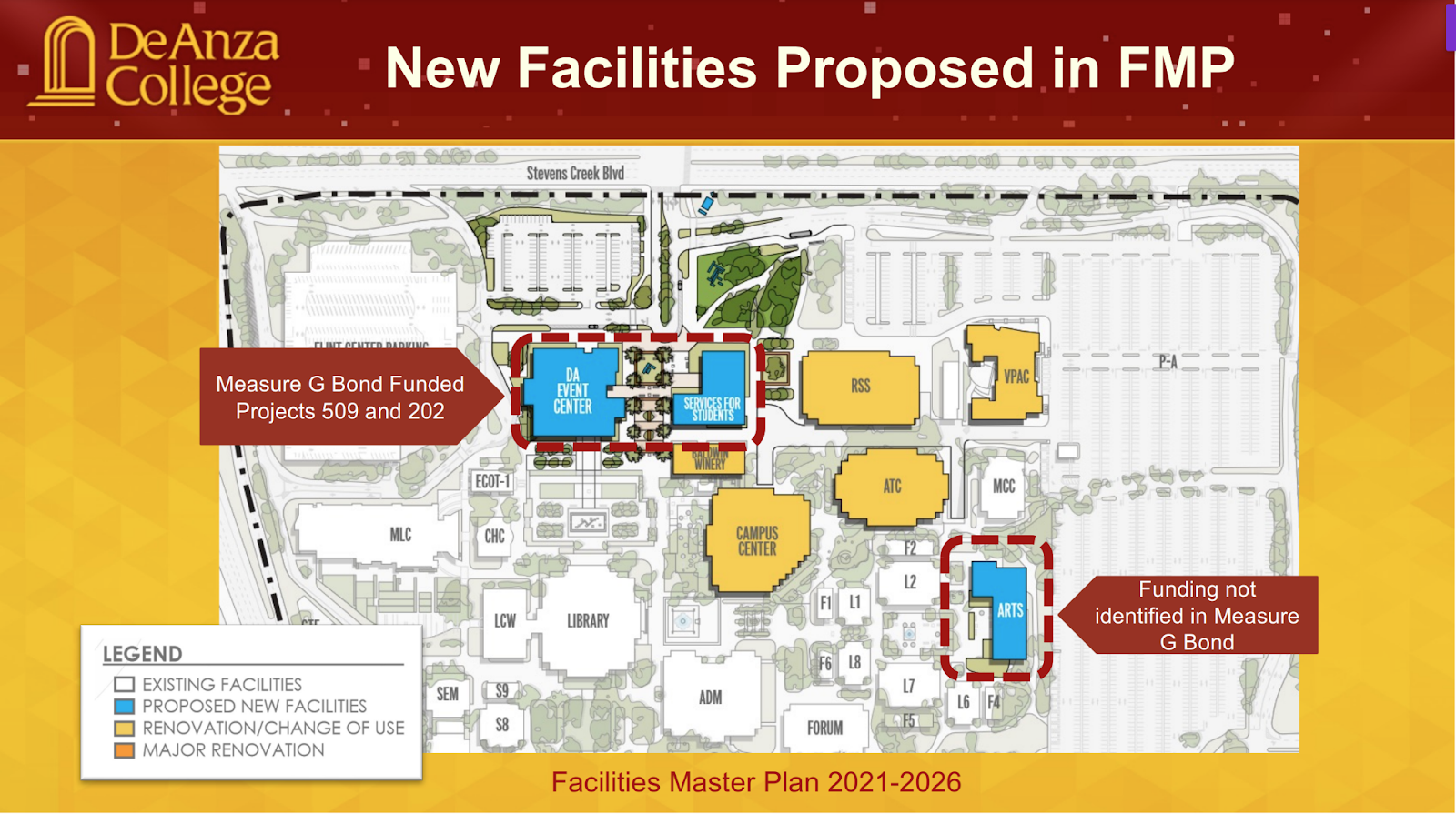
Pictured is a slide from the progress report presented by the college administrators to the FHDA Board of Trustees on Nov. 7, 2022.
Pictured is a slide from the progress report presented by the college administrators to the FHDA Board of Trustees on Nov. 7, 2022.
Julie Hughes, the Department Chair of Visual Arts and Design, said she felt worried for the fate of the Creative Arts division at De Anza because at this time she didn’t know where the art buildings would be permanently located.
“All the site walks conducted were to look at temporary swing spaces and they (the facility planning team and the school administrators) had no plan for permanent spaces for us,” Hughes said. “The thing that's been difficult for art instructors and art students is that there is a feeling of insecurity around our spaces and around our worth at De Anza.”
The tension peaked on Dec. 5, 2022 at a Board meeting. Tim Shively, a De Anza English instructor and the FHDA Faculty Association President, said De Anza students and faculty came to address their concerns regarding the Art quad relocation.
“The meeting was harsh because our students were sharp,” Shively said. “A lot of students showed up. Even the ones from previous years came back, criticized the institutional gentrification and asked (the board) to build the new art facilities before making any other decision.”
This movement made such a huge impact on the Board of Trustees that they decided to go back and revise the original plan as well as pay an extra $19,400 to LPAS Architecture & Design firm to further the evaluation of alternate locations for affected art programs.
Pam Grey, Vice President of College Operations, said that the Board’s decision was important because it shows that the plan was a work in progress.
“This was working with architects to see what was possible, and (incorporating) the ideas that the architects and the dean of the area had to see what was feasible,” Grey said. “I think we were talking about it temporarily until something was built.”
The result was put together on Feb. 3 , 2023 and presented to shared governance groups and students by President Lloyd Holmes and the senior administrators on Feb. 26 at a student forum hosted by DASG.
There were six new options named C through J that were added on to the original plans. As of this time, decisions are pending but the administrators are leaning toward option J, which relocates the Arts quad to the L4 buildings.
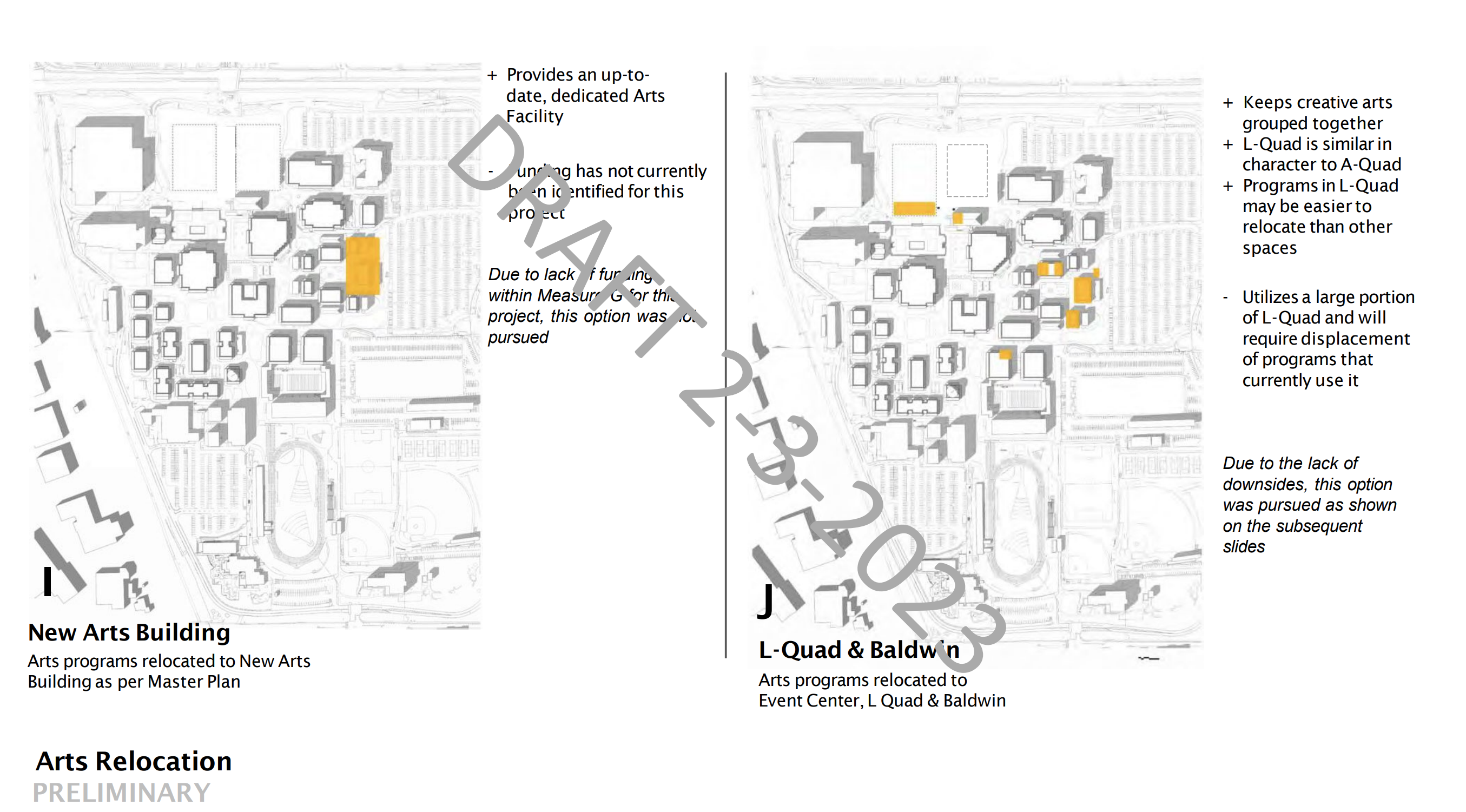
Hughes said that she doesn’t think option J works because all the classrooms in L4 buildings will have to be moved.
“It's like this domino effect,” Hughes said. “If they're leaning toward relocating most of the creative arts to the L4, they are displacing all sorts of other classrooms as well, such as the village space that just opened, (Journalism classrooms) and English classrooms.”
Lewycky said that if every shared constituent had better communication they would solve the problems easier.
“There was zero communication in terms of what we actually needed and that's the first major breakdown,” Lewycky said. “It's my belief that architects working with major institutions (typically) go to each program of the institution and get into the basics of what the program needs before they start assimilating that into a general footprint. But that step still hasn't happened, (and) it needs to happen in order for us to feel comfortable moving to a new and realistic space.”
There has also been a conversation around whether a student services building needs to be built in place of the A quad.
Amy Huang, 24, a business tri-major and the current DASG President, said that she understands many offices on campus need new renovated spaces but she disagrees that the creative art division has to be torn down for that purpose.
“This (new building) should not come at the expense of an entire creative arts division being demolished,” Huang said. “Not only the students, but also the professors who are hired here are deeply affected because this is their livelihood, this is their career.”
Originally, the campus facilities team formed student focus groups to survey 26 students about the types of spaces they would like to see developed on campus. The results showed a need to improve visibility and access to student support services.
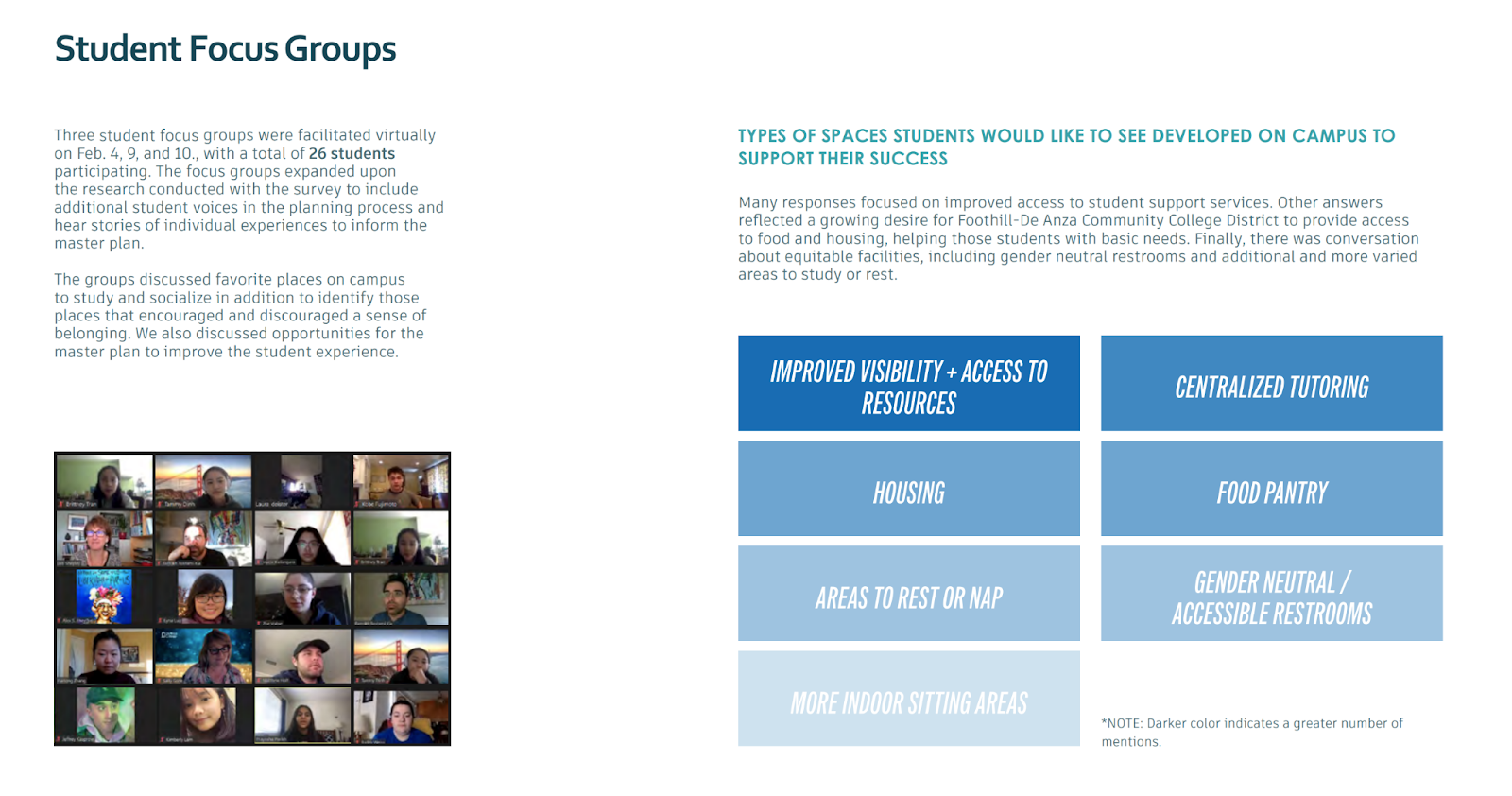
Pictured is a slide from the Facilities Master Plan 2021–2026 that shows information about the student focus group.
Pictured is a slide from the Facilities Master Plan 2021–2026 that shows information about the student focus group.
Yuetong Zhang, a De Anza alumna who participated in the student focus group, said that the survey result doesn’t actually reflect what students need.
“My experience with the campus facilities and the consultants they bring in is that they do these focus groups to be able to say ‘Yes, we had these focus groups to listen to what students want to say, but this is what we have decided to move forward with instead,’” Zhang said. “Despite how many times we keep telling them this, it's just their priorities are all wrong.”
On May 3, 2021, Jennifer Mahato, the De Anza Director of College Operations, said at the Board meeting that the purpose of a new Services for Students building for De Anza College would be to create a more welcoming entry point to the campus and bring all the student services programs together.
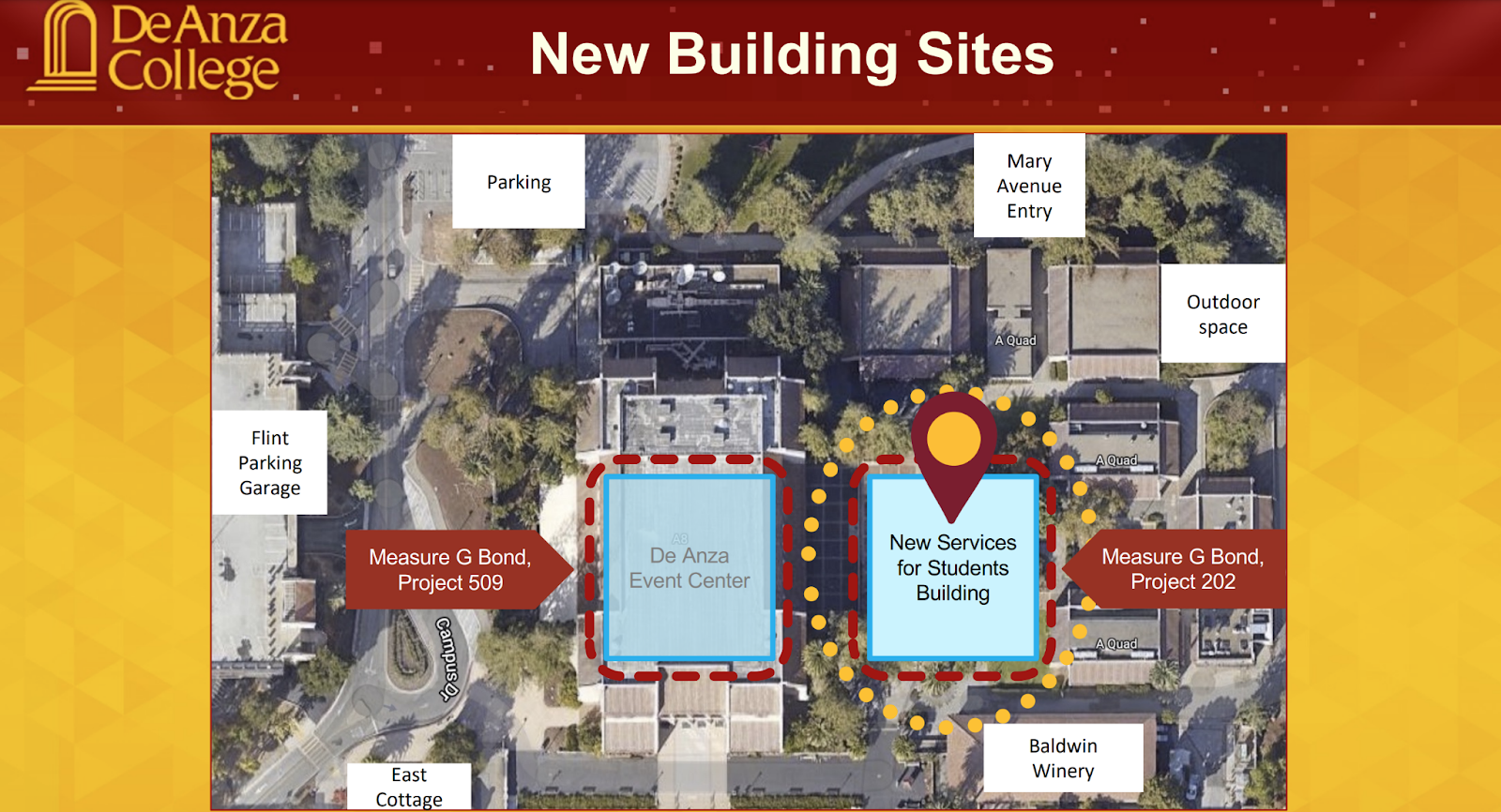
The new Services for Students Building was identified as a Measure G Bond project and placed on top of the Arts Quad, as captured in the progress report to the FHDA Board of Trustees on Nov. 7, 2022.
The new Services for Students Building was identified as a Measure G Bond project and placed on top of the Arts Quad, as captured in the progress report to the FHDA Board of Trustees on Nov. 7, 2022.
Hughes said that she disagrees with the idea of demolishing A-quad for the new Services for Students building because the arts are also important to De Anza.
“It doesn't have to be this brand new facility that annihilates part of the fabric of what De Anza is,” Hughes said. “The student services center doesn’t have to be there (on the existing Art quad location). There's lots of places it could go, but they want this entrance.”
Marco Marquez, a graphic design instructor, said that he regrets supporting Measure G because the funds are not being used to improve the Art department.
“I spoke positively about Measure G with my neighbors and other members. of the community because I was told that the funds would be used to improve our educational spaces,” Marquez said. “Now (it appears) that it may not be the case, specifically for the art department.”
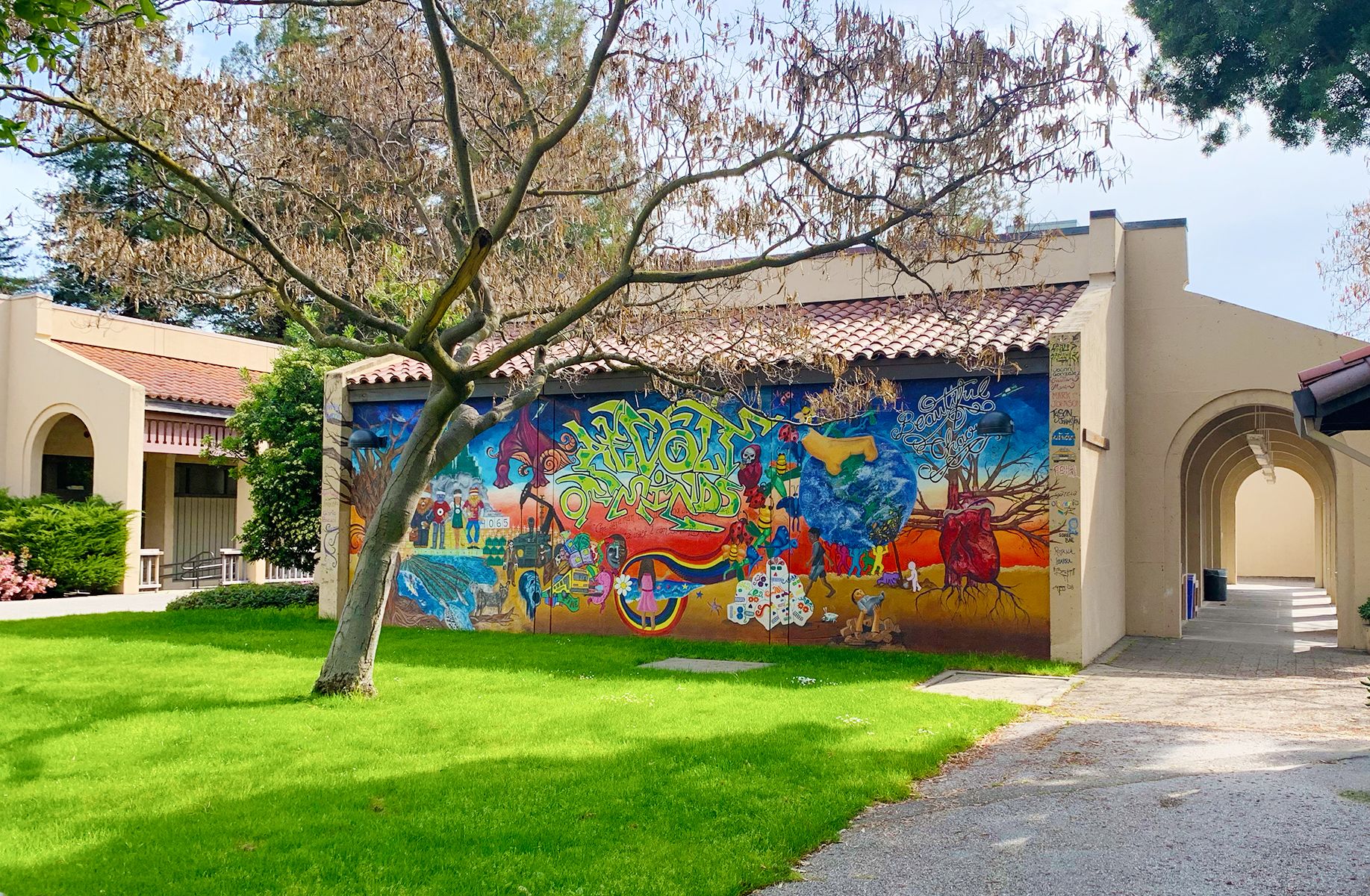
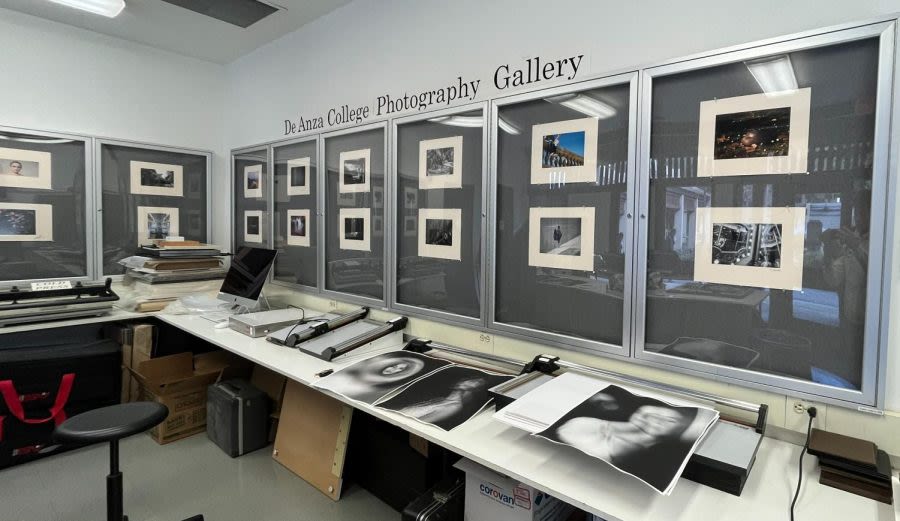

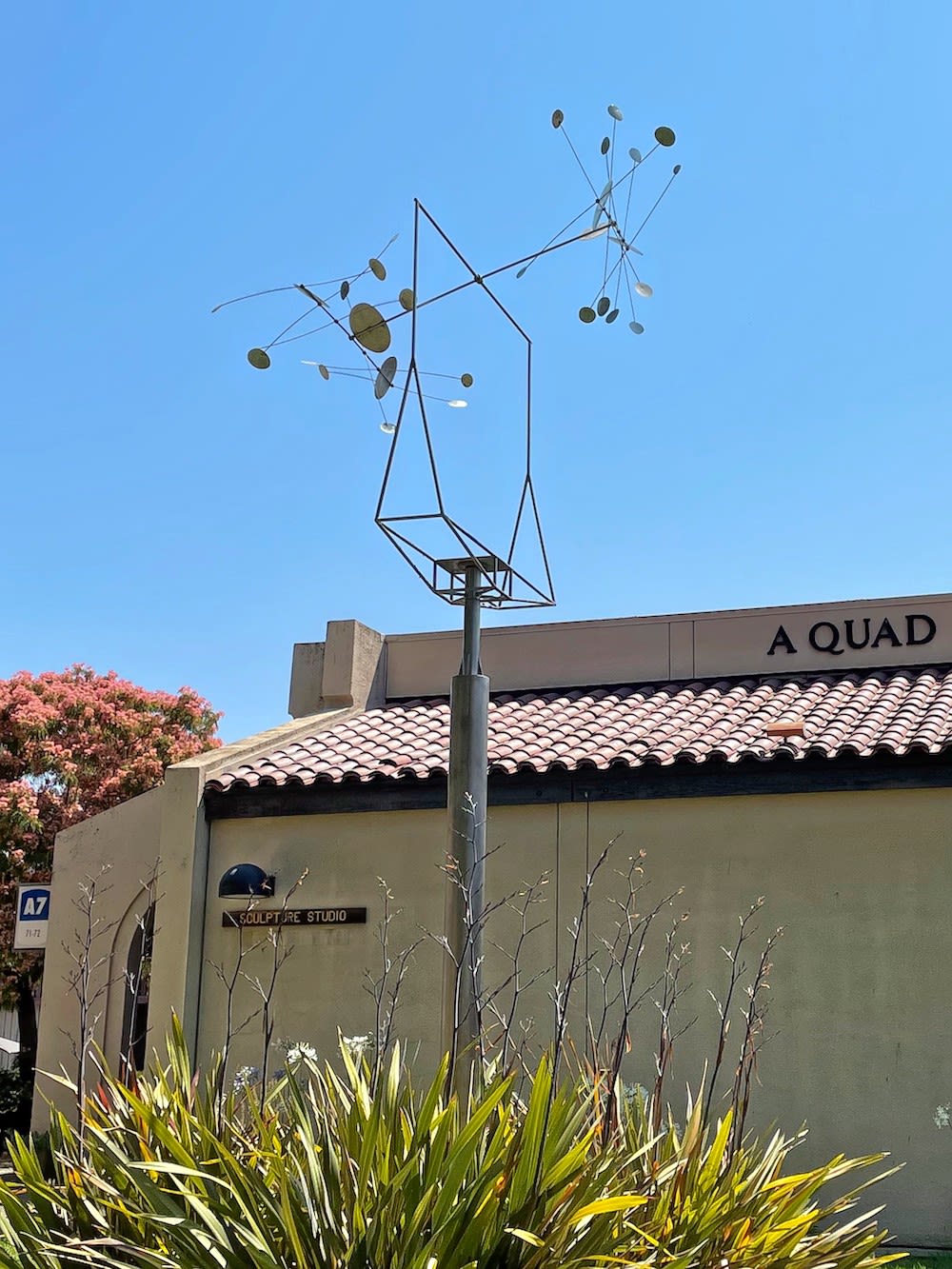
Written by Lauren Linh Bui and Rory Conlon
Additional reporting contributed by Anisa Qadir and Georgina Munoz-Villanueva
This article is part one of an enterprise series on the use of $898 million in bond money at De Anza. Part two will focus on analyzing the Measure G proposed projects led by Foothill and De Anza community college district, including the De Anza Event Center and affordable housing.